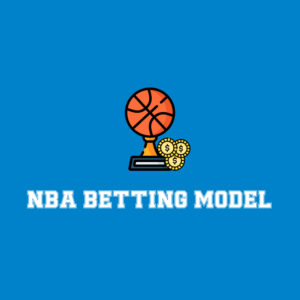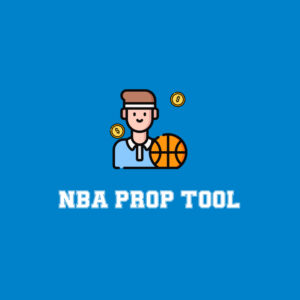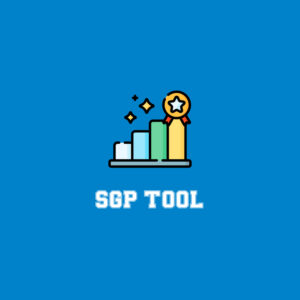
The Super Bowl is always a major calendar milestone during MLB prep, and it’s now finally in the rearview mirror. With the gridiron closed, any preparation-based edge we have established will begin to erode with a shift in public focus toward the national pastime. Be that as it may, you don’t get the moniker of Mr. MLB Moving Averages if you aren’t smashing statcast metrics during the game while everyone else is eating wings.
Welcome back to FTN Fantasy, as we continue our in-depth, multimedia positional previews for the 2021 MLB fantasy baseball season. Today we’ll tackle one of the premier positions in the game, shortstop. Particularly in roto formats, the best shortstops dominate the highest rounds of the draft, offering uniquely balanced five-category contributions. Once again, we’ll stratify the top dozen or so players for all my home leaguers out there before we take it over to the Corked Stats Podcast on the FTNNetwork. There we’ll get into deeper analysis for the later tiers, middle infielders and sleepers. I find later on in player selection that each case is so particular, they deserve individual attention in order to properly explicate when, where and why to draft them.
(Check out the first base and second base positional previews.)
Tier 1
Fernando Tatis Jr., SD, SS1 (ADP 3)
Trea Turner, WAS, SS2 (ADP 7)
Trevor Story, COL, SS3 (ADP 11)
An easy cop-out would be to tell you these three players are all otherworldly talents who you should draft with your eyes closed. Though that may be the case for our end, I wanted to get a quick spotlight on why they’re being valued so highly. Tatis exudes energy and charisma, then backs up the electricity with one of the strongest batted-ball profiles in MLB, at only 22 years of age. To this point, he’s had what equates to one full season in his career, and no fantasy player has been more valuable during that time. In his 629 PAs, Tatis has mashed a .301/.374./.582 slash line with 39 HRs, 27 SBs, 111 R and 98 RBI. His myth only grew stronger in 2020, putting on an absolute clinic from a batted ball perspective, leading all MLB in statcast hard hit rate (62.2%). Tatis is also only one of two players in 2020 (along with Miguel Sanó) to average more than 100 MPH on his flyballs/line drives, topping it off with a top-three overall finish in barrel rate (19.5%). Couple in some advancements in disciplinary approach (K%, chase %, swinging strike % all down from 2019), and you can see why Tatis and his .281/39/26/113/108 projected line from the BatX are going as the No. 1 offensive player in roto leagues.
Turner is awesome. Any questions? Outside of realizing the prospect pedigree, elite surface production, and excellent team context, the most impressive part of Turner’s game, in my opinion, is the improvements. Concerns over whether power would develop have been answered, leaving Turner as one of the best fantasy players in the game. Frankly, there’s an argument to be made for him to be drafted as high as the No. 2 overall spot. Over the last three seasons (about 1400 PAs), we’ve seen steady growth across his averages, discipline, elevation, and batted ball quality; AVG, OBP, SLG, K%, groundball percentage, line-drive percentage, HR/fly ball percentage, barrel percentage all show signs for continuation. BatX projections are in line with my assessment, forecasting a .293/25/37/108/85 line, easily justifying a first-round pick in any format.
One of my most-drafted first-rounders of recent years, Story checks every fantasy box every single year, providing ample return from this draft slot annually. For whatever reason, his consistent .290/35/25/100/85 floors never seem to garner consideration in the top five overall, which is just fine by me. He delivers in all five categories and as a bonus, the slight relative discount translates into the ability to add that critical ace on the return pick in Round 2. I assume some of the stigma centers around playing in Coors, which we’ve now been told by the organization will not be changing for the 2021 season. Before we get too reactive based on public perception, let me remind you that Story improved his power output on the road — he had more HRs, runs and RBIs away from Coors in 2020, not to mention 12 of his 15 steals came on the road. Many players have stronger home splits, and I think that’s natural even if from a narrative-based argument regarding routine, home or family. The fact is that he’ll be playing half his games a mile above sea level, and I’m still confidently expecting .285/34/26/103/90. This story ends well for fantasy GMs,
Tier 2
Francisco Lindor, NYM, SS4 (ADP 17)
Bo Bichette, TOR, SS5 (ADP 24)
Adalberto Mondesi, KCR, SS6 (ADP 25)
Lindor is the newest resident of my hometown NYC. He’s a perennial league leader in plate appearances and a former consistent first-round pick. Reliability is a skill, just one of many Lindor possesses. Another five-category contributor, my expectations for Lindor best mirror Story’s, just with slightly fewer steals and a couple less batting average points. The major projection systems appear to weigh last year’s average more heavily than my own. They’re forecasting what would amount to a new full-season low in batting average, below .270. I don’t mind bucking the authorities from time to time, as I’m closer to his career .285 (over more than 3,500 PAs). I see a player entering his power prime who still has good speed, having sustained both consistent disciplinary skills (6.4% K-BB%, 9.3% swinging strike percentage) and power metrics (41.1% statcast hard hit rate, 111.4mph max exit velocity, 25.6% line drive percentage). I’m drafting Lindor with conviction at the cost. There are roughly 10 to 12 elite players (depending who you ask) at the SS position, and in my opinion, you almost need to have one to win. Stay aware of the looming dropoff in talent outside of these aforementioned players, as it happens fast, and that level of balance is extremely hard to find later on during the draft.

The Blue Jays have had a very busy offseason, adding two All Star-caliber players in George Springer and Marcus Semien. That rising tide will lift all ships in my opinion, boosting Bichette’s counting stats by sticking him right in the center of one of the most dangerous lineups in MLB (with far above-average divisional park advantages). Bichette is one of the most exciting, brightest young stars, and he promises to contribute in every category when he stays on the field. My initial concern over steals has waned a touch, but the odds he’ll miss some time would likely be a favorite on the betting board. With no medical experience, I don’t pretend to predict injuries with certainty but at this cost, it has to be part of our calculation. If I could guarantee a full season, then I would be all-in at this price; Bichette’s per-game output is objectively elite and I think the BatX projection of .282/23/19/94/80 will fall short in runs and RBIs compared to my 185. Personally, I would like to see more walks, but with the elite 2020 contact profile (91.5% in-zone contact percentage), excellent batted ball quality (12.5% barrels per BBE, .417 xwOBA on contact), and upside for massive counting stats (career 1.25 RBI+R per game) Bichette is a first-round pick for 2022 if he gets in a full year.
The next player just may be the most polarizing on the entire draft board, carrying quite literally the widest range of outcomes in the game. By my estimation, Mondesi is the only player with a non-zero chance of both finishing as the top overall player and getting a skill-based demotion to AAA. Mondesi’s speed is that of fantasy baseball lore. He has 113 SBs in under 1,200 professional plate appearances. In the age of decreased SB supply and increased demand, the market conditions are met to gap his ADP up into the mid-second round. Mondesi represents so many extremes in the game. The extreme courage to take the extreme risk with the extreme reward. Drafting him could mean the ultimate in-draft flexibility, essentially eliminating any other need to acquire steals. Mondesi projects to have 33% more steals than the next player and twice as many as the fifth overall. For perspective, roughly 120 SBs will get you to the 80% threshold in the NFBC Main Event — Mondesi could get you two-thirds of the way there by himself. Simply put, he’s a category league winner that completely changes your team’s trajectory, but it comes at a cost. The downside? His hit tool is flawed, to say the least; a career 30% K% coupled with a sub 5% BB% mars the discipline, hitched to one of the single worst contact baskets in MLB (in-zone swing percentage, in-zone contact percentage, chase percentage and total contact percentage are all at least 10 points off the league average in the wrong direction). When he does hit it, he hits it hard (90.6 MPH average exit velocity, 111 MPH max exit velocity). I’d be remiss, however, to not include the real possibility of a sharp downslide in production, highlighting how severely he outperformed his 2020 expected stats. I understand they aren’t all-encompassing and that blinding speed papers over some flaws, but I never ignore the picture those advanced stats paint as part of my overall analysis. Each GM has to decide on his or her own if they can stomach the risk, or choose the path more traveled in a traditionally balanced approach. For points leagues and best balls it’s an easy hard pass on the speedster.
Mondesi’s actual vs expected in 2020:
- OBP .294 vs. xOBP .249
- AVG .256 vs. xAVG .208
- SLG .416 vs. xSLG .348
- wOBA .305 vs. xwOBA .255
- wOBA on contact .409 vs. xwOBA on Contact .341
Tier 3
Corey Seager, LAD, SS7 (ADP 35)
Xander Bogaerts, BOS, SS8 (ADP 36)
Tim Anderson, CHW, SS9 (ADP 41)
Seager had one of the quietest monster short seasons in MLB last season, delivering a healthy post-hype 307 AVG with 15 HRs and 79 R+RBIs (tied for 10th overall in MLB). I don’t necessarily doubt his talent but personally, I’m having a hard time explaining the atypical power surge as anything other than an outlier. Seager kept most of his peripherals in-line with his career stats, except for an extreme jump in barrel percentage to 15.8% (a near 100% increase from his previous high) and the subsequent 21.7% HR/FB to follow. My problem with the expectations is we’ve seen the same profile play out productively, just without the gaudy HR total. I’m going to break from the BatX projections here (.281/33/2/99/103) and take the loss if I’m wrong. This isn’t to denounce Seager’s talent, as I project the AVG to be closer to .290 (career.295 AVG, 23.7% line drive percentage). However, if you do believe in a new power ceiling from Seager (feasible in the age-26 season) then you can’t ignore him. Generally, when I have this kind of uncertainty at this early stage of a draft, there’s inevitably someone who likes that player more than I do, jumping ADP. Let me leave you with this nugget on Seager regarding projections: per the FanGraphs auction calculator, Seager is one of only 19 players in all of MLB set to earn $25, and he is the last of those by ADP — an objective case for one of the biggest values on the board regardless of my own opinions.
Mr. Reliability in Beantown for years, Bogaerts is the player I have been choosing over Seager. He’s getting habitually overlooked for what he always brings to the table. It seems too easy to statistically justify my stance at cost. Since 2019, he’s been in the top three in shortstop AVG, OBP, HRs, runs, RBIs (first), wOBA and wRC+. Those sound to me like stats that matter. He plays every day, every year and contributes for us in every category. I love the team context, the intradivisional ballparks, the disciplinary skills (Career 10% K-BB%), the contact profile (88.9% in-zone contact percentage, and, most of all, the price. I’ve been calling for a general resurgence from the Red Sox, so I’m a bit higher on Bogaerts in AVG and RBI than BatX’s (.287/27/6/92/86), making him a slam dunk for me in any format.
Anderson is the last of this bunch by ADP (and personal preference), even though you’ve been able to bank on 17 HR/17 SB for half a decade. My problem is the high batting average and super high BABIP carried over into 2020 (2019: .335/.399, 2020: .323/.383), and they’ve taken his price tag along with them. There’s a definitive jump in his stats beginning in 2019 that have many analysts, including myself, scratching their head a bit. We know the elite speed out of the box helps with balls in play. However, without sustained spikes in line drive percentage or corrections in his elevation basket (career 50.7% ground ball percentage, 28.7% fly ball percentage in 2,382 PAs), it’s hard for me to believe in this step forward when I have to pay for it happening already. Anderson is an excellent ballplayer as well as a great guy in a great environment for fantasy production. I’m just having trouble buying into the projection systems’ mid-20 HR totals as well as my already expressed concerns regarding batting average (not to mention the subsequent effect on runs scored).
Tier 4
Gleyber Torres, NYY, SS10, (ADP 70)
Javier Báez, CHC, SS11 (ADP 72)
If you find yourself facing down the imminent shelf in talent come the third to fourth rounds without one of the above players, I implore you to fill your SS1 here. I’ve done tons of live builds this offseason, calculating combinations of projections along the way, and all of my best roto teams have an elite SS. In a 12-team league, the positional demand should be lower than a 15-team league, where there isn’t enough to go around. It’s imperative for me to not fall behind the eight-ball at the position. One look at Torres’ surface stats from 2020 and you can see what kept him out of the earlier sections of this article. A running theme I’ve featured throughout this series is the individual analysis necessary for 2021. Torres is another perfect example. Like many other players, he struggled with timing and conditioning in the second spring training. In his 42 games played, we saw his worst production to date, centered around poorer batted-ball quality than we’ve seen or expect for 2021 (3.7% barrel vs 9.3% career, .320 xwOBA vs. career .346). One thing I have focused on is the disciplinary skills, and Torres showed the best of his career in 2020. Dropping his chase percentage lowered his swinging strike percentage, translating into a lower K% and higher BB%, which offset his AVG drop with a higher OBP. All of these are signs of maturity. Also, where we don’t generally look at the playoffs, maybe we need to now more than usual. Gleyber’s 30 playoff PAs accounted for 18.7% of his total, and he was insanely good: 10-23, .435, 2HRs, 2SBs, 5R, 5RBIs and 1.262 OPS. My main point here being if Torres retains his improved approach and returns to the quality hitter we know he has always been with routine preparation, he can easily fulfill his highest projections (.274/34/7/91/107). Returning $20 per the auction calculator (where he’s currently projected with only 30 other players) feels like the low end if everything clicks for him in the middle of that dominant Yankees lineup.
If you noticed earlier, I intentionally used some noncommittal wording above to describe my cutoff line for elite. When I say I’d vouch for a dozen or so shortstops, it’s because my confidence in competitive positional returns starts to wither entering this fourth tier. I’m noticing more and more, however, that projection systems (and the industry as a whole) are deeper on the position than I am, specifically with this last SS today. Báez has had solid finishes, I don’t deny it. He seemingly never meets my profile parameters regardless of output, and this isn’t to ding him for the outlying .203 AVG in 2020. I know he’s been a .280 hitter over the previous three years and 2,000 PAs but what can I say? I don’t like how he gets there. Báez’s career disciplinary stats (28.4% K%, 17.7% swinging strike percentage, 43.5% chase percentage, 4.7% BB%), and elevation metrics (46.7% ground ball percentage, 18.9% line drive percentage, 34.4% fly ball percentage) give him the least repeatable probability for return and make justification a lot harder at the price.
That was a mouthful and should do it for the first portion of my take on the 2021 fantasy baseball shortstop landscape. I’m not hiding the fact that if we’re drafting together, you can expect me to snag one of these players every single time out. Now it’s onto Corked Stats where I’ll pick up on the SS2 market, plus middle infielders and sleepers for the deep league crowd. If you haven’t already, make sure to check out my 1B preview and 2B preview. Thanks for reading. Please subscribe, rate and review the podcast.
Top 10 shortstops (4:25)
Dansby Swanson (10:28)
Carlos Correa (15:57)
Marcus Semien (20:30)
Didi Gregorius (25:02)
Chris Taylor (30:53)
Paul DeJong (35:57)





























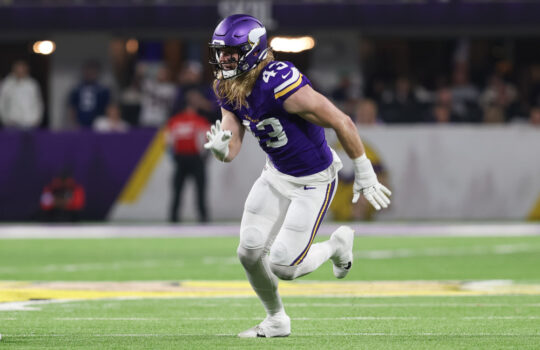



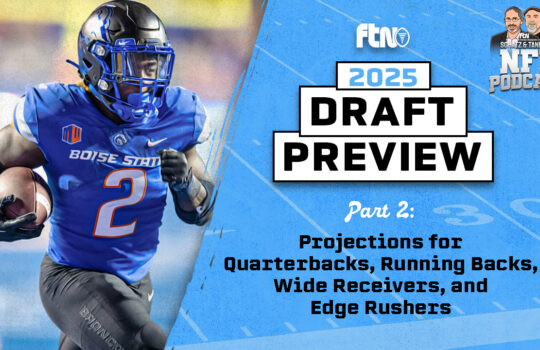

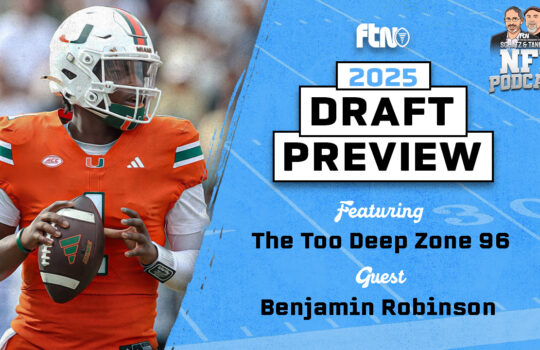





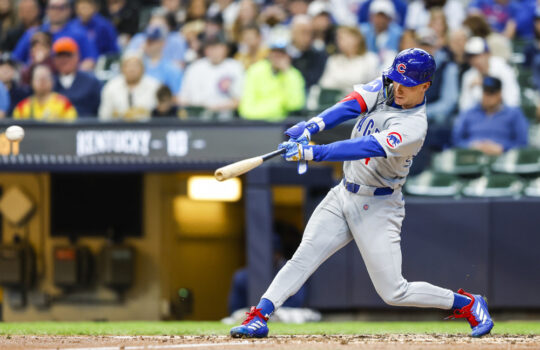

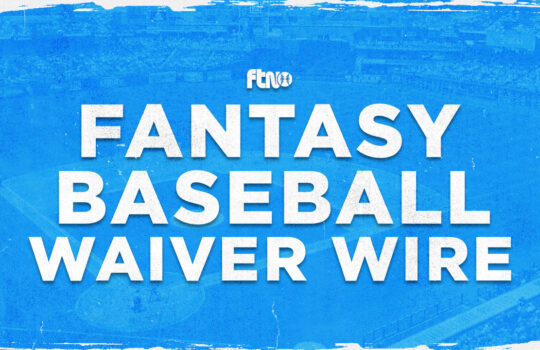

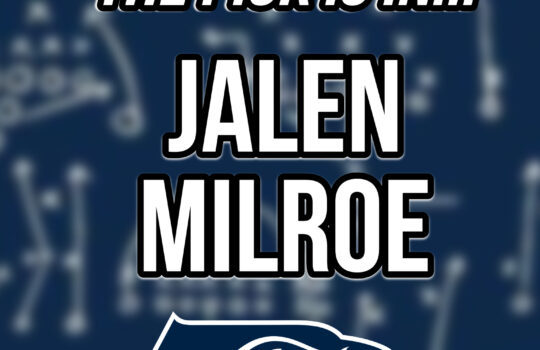

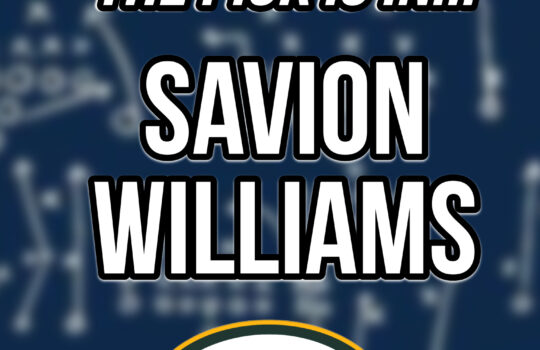
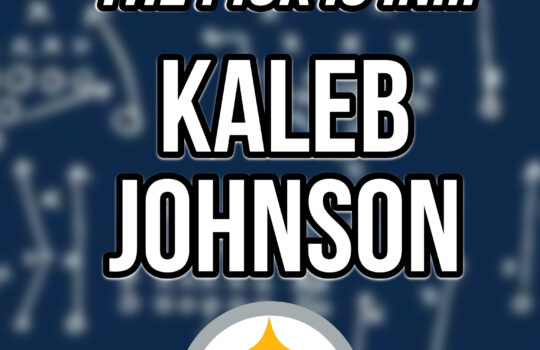

 New York Jets
New York Jets  New England Patriots
New England Patriots  Miami Dolphins
Miami Dolphins  Buffalo Bills
Buffalo Bills  Pittsburgh Steelers
Pittsburgh Steelers  Cleveland Browns
Cleveland Browns  Cincinnati Bengals
Cincinnati Bengals  Baltimore Ravens
Baltimore Ravens  Tennessee Titans
Tennessee Titans  Jacksonville Jaguars
Jacksonville Jaguars  Indianapolis Colts
Indianapolis Colts  Houston Texans
Houston Texans  Las Vegas Raiders
Las Vegas Raiders  Los Angeles Chargers
Los Angeles Chargers  Kansas City Chiefs
Kansas City Chiefs  Denver Broncos
Denver Broncos  Washington Commanders
Washington Commanders  Philadelphia Eagles
Philadelphia Eagles  New York Giants
New York Giants  Dallas Cowboys
Dallas Cowboys  Minnesota Vikings
Minnesota Vikings  Green Bay Packers
Green Bay Packers  Detroit Lions
Detroit Lions  Chicago Bears
Chicago Bears  Tampa Bay Buccaneers
Tampa Bay Buccaneers  New Orleans Saints
New Orleans Saints  Carolina Panthers
Carolina Panthers  Atlanta Falcons
Atlanta Falcons  San Francisco 49ers
San Francisco 49ers  Seattle Seahawks
Seattle Seahawks  Los Angeles Rams
Los Angeles Rams  Arizona Cardinals
Arizona Cardinals 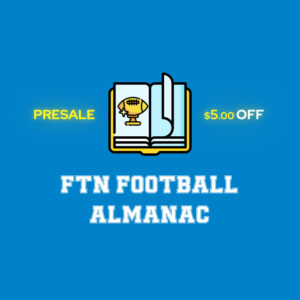
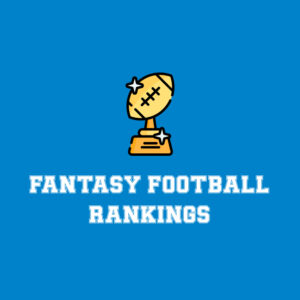
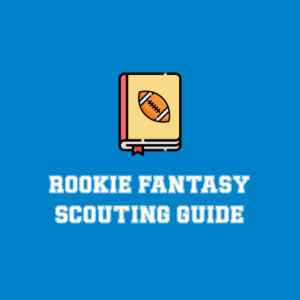
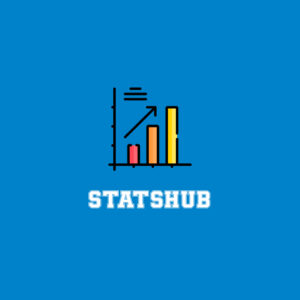





 Boston Celtics
Boston Celtics  Brooklyn Nets
Brooklyn Nets  Philadelphia 76ers
Philadelphia 76ers  New York Knicks
New York Knicks  Toronto Raptors
Toronto Raptors  Chicago Bulls
Chicago Bulls  Detroit Pistons
Detroit Pistons  Milwaukee Bucks
Milwaukee Bucks  Cleveland Cavaliers
Cleveland Cavaliers  Indiana Pacers
Indiana Pacers  Orlando Magic
Orlando Magic  Atlanta Hawks
Atlanta Hawks  Charlotte Hornets
Charlotte Hornets  Miami Heat
Miami Heat  Washington Wizards
Washington Wizards  Denver Nuggets
Denver Nuggets  Minnesota Timberwolves
Minnesota Timberwolves  Oklahoma City Thunder
Oklahoma City Thunder  Portland Trail Blazers
Portland Trail Blazers  Utah Jazz
Utah Jazz  LA Clippers
LA Clippers  Golden State Warriors
Golden State Warriors  Los Angeles Lakers
Los Angeles Lakers  Phoenix Suns
Phoenix Suns  Sacramento Kings
Sacramento Kings  Dallas Mavericks
Dallas Mavericks  Houston Rockets
Houston Rockets  Memphis Grizzlies
Memphis Grizzlies  New Orleans Pelicans
New Orleans Pelicans  San Antonio Spurs
San Antonio Spurs 
